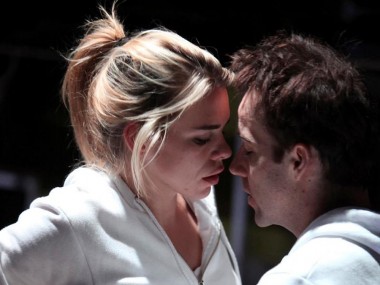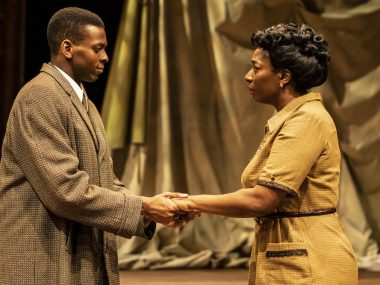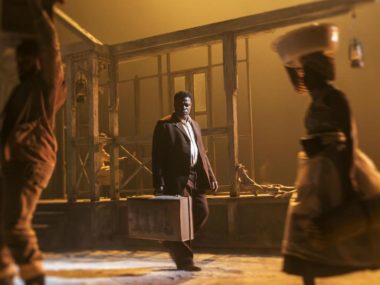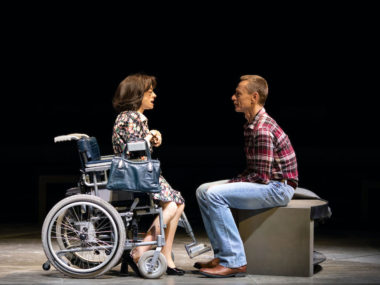The Effect, National Theatre
Monday 14th August 2023
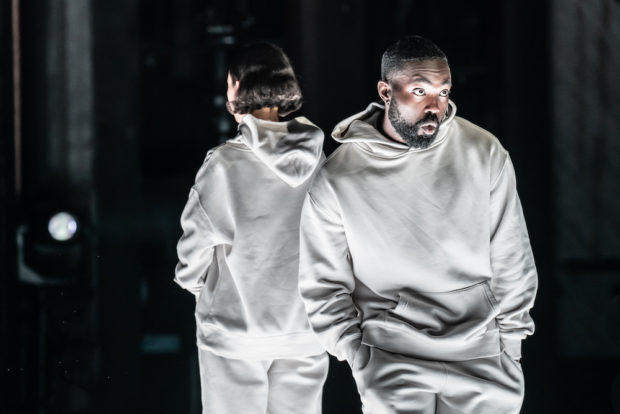
Success always kicks open doors. Ever since the HBO drama Succession was lauded as a huge international hit, one of its writers and producers, Lucy Prebble, has been a hot property. Although I personally find much of this over-rated series unconvincing, distasteful and frankly unwatchable, I do admire several of her plays, including The Sugar Syndrome and The Effect, which so far is her masterpiece. So it makes sense for director Jamie Lloyd to stage a revival of this 2012 brain-teaser, this time with an all-black cast. I think it’s high time that directors introduced more diversity into revivals of contemporary classics.
Originally produced — starring a mesmerizing Billie Piper — in the smaller Dorfman space at the National Theatre, it now graduates to the main stage of the Lyttelton theatre, which has been re-modelled to create a traverse-style modern modern classproduction. Lloyd and Prebble’s decision to cast Canadian film actor Taylor Russell and award-winning RSC actor Paapa Essiedu — which required some rewriting of the play — as the leads, and two other non-white actors in the other roles, is both an engagement with the social issues of race and mental health in the black community, and arguably a response to Joe Penhall’s depiction of “black psychosis” in his Blue/Orange.
Despite the new characterization of Tristan (Essiedu) as a Hackney rather than a Coleraine youth and Connie (Russell) as a student from Ontario rather than Basingstoke, the excellent plotting remains the same. In a residential medical centre managed by Raushen, a big-pharma company running clinical trials of a new dopamine-heavy drug that might cure depression, Connie and Tristan are the youthful volunteers. As the intensive experiment progresses, they are attracted to each other. But is this the result of the happy pills, or is it a natural attraction? And what’s the difference? To complicate matters, Prebble throws in that essential element in any blind scientific test, the placebo. Now, which of the two volunteers is taking the placebo, and how does that alter what they think they are feeling?
Supervising the drug trial are two older doctors, Dr Lorna James and Dr Toby Sealey, who not only interact with the rather anti-authoritarian Tristan and the more respectful Connie, but also deliver two matching mini-lectures in which the chemical nature of our brains and emotions are discussed. By giving in to their mutual attraction, Connie and Tristan are breaking the rules of the experiment, much to the dismay of Dr James. She not only tries to control their natural, or drug-induced, urges but also comes into conflict with Dr Sealey, who believes that a super-Prozac pill is the holy grail of neuroscience. Her attitude is more nuanced, and influenced by her own experience of depression. If love is a drug, sadness is humanity’s curse.
Lloyd’s production has a bare traverse stage with no props except a bucket and two chairs. He favours an abstract anti-naturalism which means that whenever the actors mention cigarettes or mobile phone the audience has to imagine these items in the hands of the actors — the only exception is a human brain handled by the two doctors. So there’s a certain signature starkness to this event, accentuated by Soutra Gilmour’s design (and Jon Clark’s sharp white lighting). Both Connie and Tristan wear white track suits and by contrast the two doctors wear black shirts and trousers. Not very realistic, but visually strong.
The play’s action is built up by a series of firm contrasts. At the start, both the test subjects and their supervising doctors are very still, the youngsters standing in the middle, and their elders sitting at opposite ends of the stage. So when the medics deliver their lectures or come into conflict with Tristan and Connie the sudden motion of people on their feet, moving across the bare stage, is exciting. This is intensified by the obvious rapport between Essiedu and Russell, who is making her stage debut. Their attraction is palpable and sparks fly in their more dramatic interactions, often signaled by a billowing cloud of dry ice. Some moments of electric energy are memorably exciting.
Both actors suggest the damage in their lives which Prebble’s text suggests, but never makes too obvious. Russell’s sweet but vulnerable Connie, after all, has a boyfriend who is twice her age and married, and Essiedu’s confident but agonized Tristan is an aimless man who travels and takes drugs to avoid the responsibilities of settling down. More explicit is the history of depression suffered by Michele Austin’s frank Dr James and the will-to-power of smooth-talking Kobna Holdbrook-Smith’s Dr Seeley. The main problem is that while Lloyd has instructed both these actors to play the human side of their characters, he has not really shown their professional faces. At work, most doctors, surely, “perform” their role as medics.
So although The Effect has many pleasures, with jibes at racism, jokes about Beyoncé and some great dancing, as well as a heightened sense of dramatic conflict, Lloyd’s production sacrifices some credibility on the part of the doctors in favour of a rather artificial theatricality. While the writing remains intellectually stimulating and the plotting robustly thrilling, the LED-lit catwalk and sense of anti-naturalism seem to me to be at odds with the basic humanism of the story, and I really struggled to feel much for the characters. Despite the moments of intensity, what’s missing is a general depth of feeling. But maybe that is an apt verdict on British theatre today: all bright revivals which flash and thump, but whose hearts are empty.
This review first appeared on The Theatre Times

